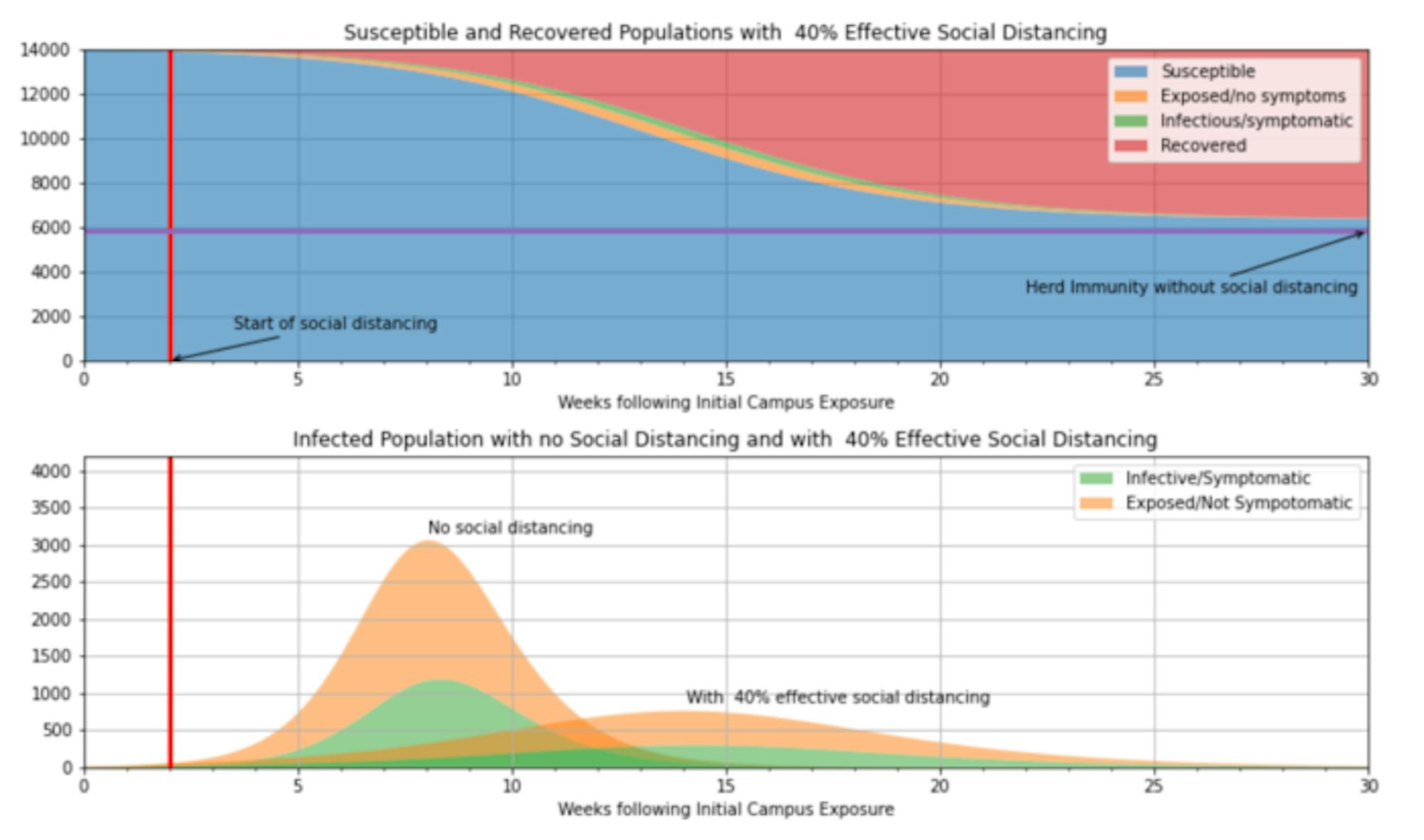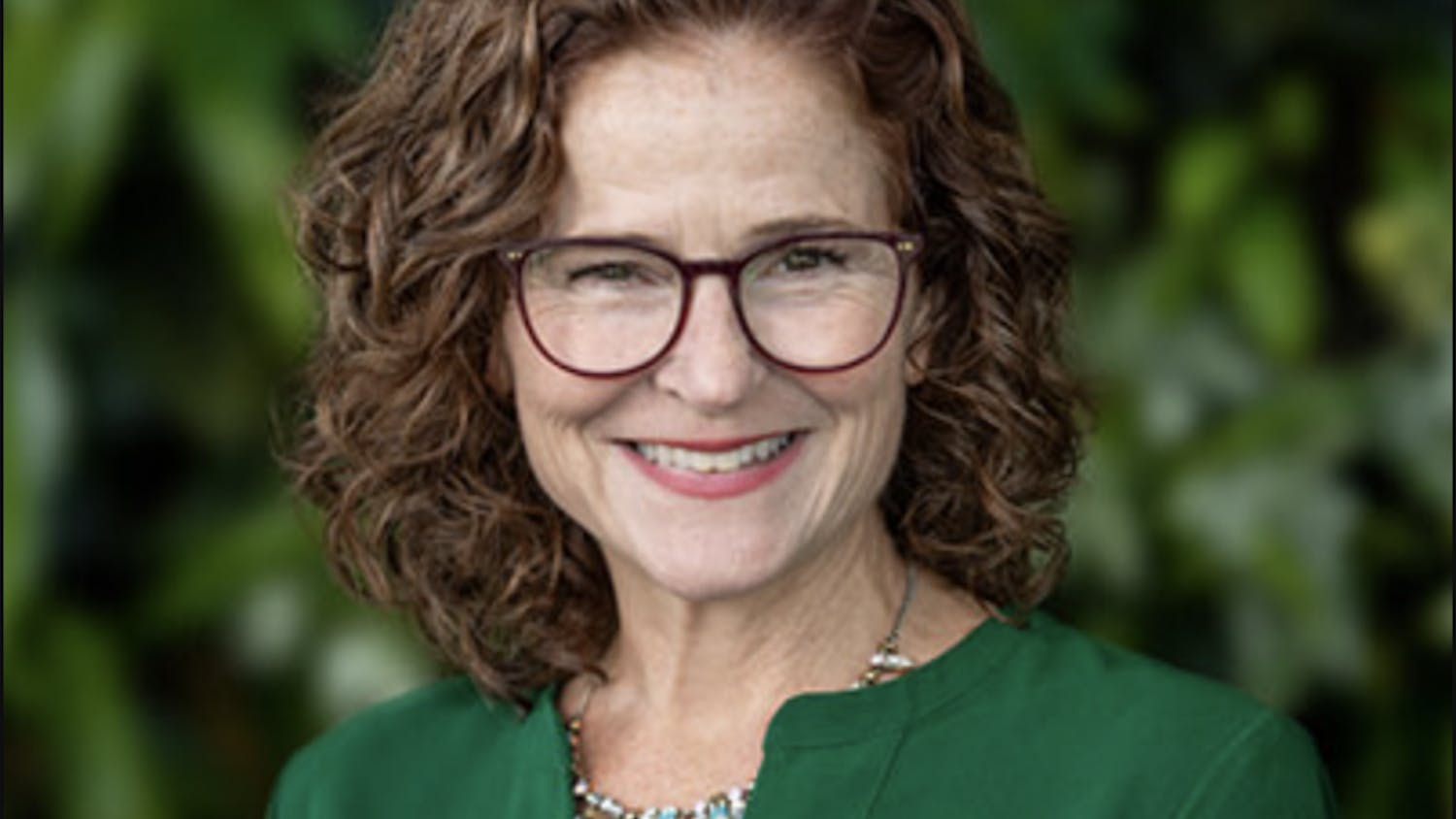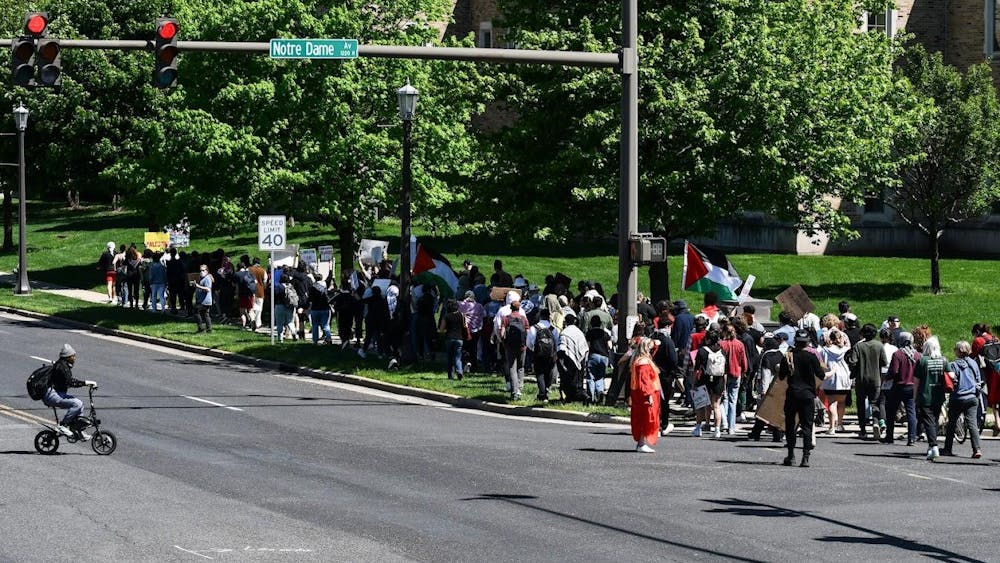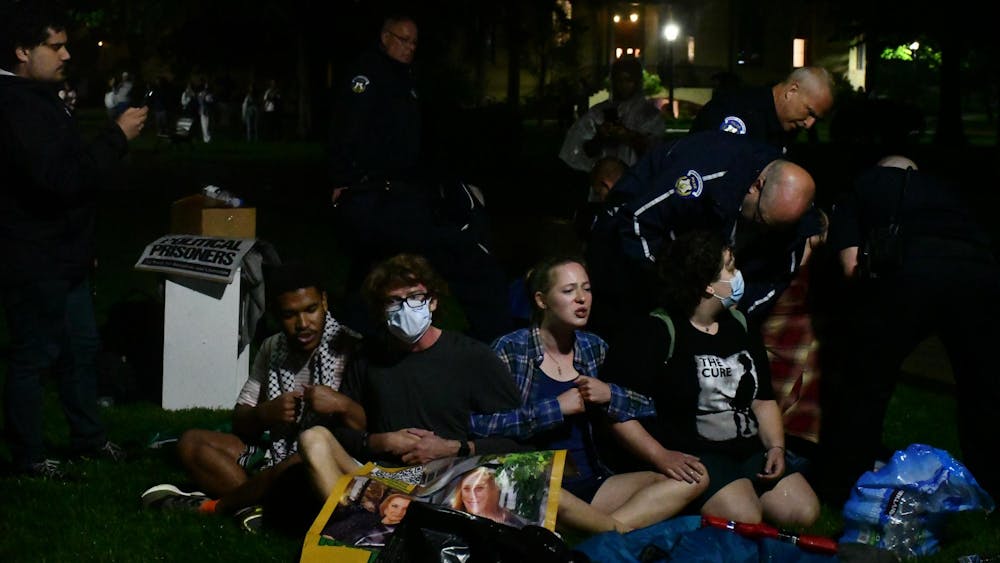Before students left for spring break, engineering professor Jeff Kantor created a model simulation of how COVID-19 could affect the Notre Dame campus and showed it to his students. Kantor explained the model is standard to predict the outcomes of infectious disease which most engineering and STEM students learn early on in their education.
The model predicts susceptibility, exposure, infection and recovery of the disease in question. The predictions are made with the following parameters: reproduction number, incubation period, infectious period, campus population, initial number of individuals exposed, start of social distancing following exposure and effectiveness of social distancing.
Without social distancing, over 3,000 members of Notre Dame’s population would be exposed but not experience symptoms from COVID-19 eight weeks after the first case arrived on campus. Just over 1,000 would be infected with symptoms. Thus, after eight weeks half of the undergraduate student body would have been exposed to the virus. By contrast, with 40% effective social distancing, the peak of those infected would occur around 14 weeks after the initial exposure, roughly 750 people would be exposed but not symptomatic and about 250 would be infected with symptoms.
With more social distancing, Kantor said, fewer people are infected. The interactive model Kantor created can be changed to result in different scenarios. 
Kantor stressed the importance of the decision to learn remotely in order to protect the Notre Dame population.
“In a college setting, you have constant exposure in dining halls, dorms, and classrooms in DeBart,” he said. “I don’t see it possible to have effective social distancing on campus. I have a class of 80 students. If we are all in a large classroom in DeBartolo, we are all jumping into the same petri dish.”
Even though the Notre Dame community has dispersed, Kantor emphasized how critical it is for everyone to limit their interactions with others.
“If we can reduce our contacts by 60 or 70%, maybe we can keep this thing at bay,” he said.
Vania Smith-Oka, a professor of cultural and medical anthropology, also spoke of the importance of flattening the curve.
“The more people who self isolate, the less number of people who get sick and they won’t oversaturate the health system,” Smith-Oka said.
She recognized that the practice of self isolating might be hard for some, but is critical to the fight against coronavirus.
“People need to do a lot of this on their own,” she said. “Those of us who have the privilege to stay home need to use this. Others like food workers and doctors do not have this privilege. What ND students can do is just stay home: not only for themselves, but for others.”
In addition, Smith-Oka praised Notre Dame’s response to the pandemic.
“I’ve been incredibly impressed ... with all of the aspects of ND which have come together to create an amazing infrastructure to teach online,” she said. “There will challenges, but I think it will come with exciting and new opportunities.”
Mari Donahue, a professor of biological sciences, also discussed COVID-19 in her class, Foundations of Global Health, before spring break.
“I hate to say it’s a great teaching moment, but it is,” she said. “I think we have a real opportunity to learn just how weak our public health infrastructure is.”
Donahue criticized President Donald Trump, who eliminated the White House’s National Security Council Directorate for Global Health Security and Biodefense in 2018, which was created under the Obama administration in response to the the 2014 Ebola epidemic.
“We’ve been kind of expecting this pandemic, because we just know through history these things will happen,” Donahue said.
The world is an incredibly interconnected place, Donahue said, and we need to work together to prevent a crisis like this again. Donahue plans on teaching a lecture on the pandemic and the world’s response to the public health crisis in the next few weeks.
Heidi Beidinger-Burnett, the director of the global health masters program, is also president of the board of health of St. Joesph County. She spoke to the situation in the larger South Bend and St. Joseph County community.
“We have a very strong leadership at the helm of this,” she said.
Her team and others have been working with leaders at both Beacon Children’s Hospital and St. Joseph’s Hospital. Healthcare providers have been working to prepare supplies and schedule the expected surge of people that may need to be hospitalized, Beidinger-Burnett.
The problem Beidinger-Burnett said is that there’s been a delay of testing in the community, which is something the county is now “ramping up.”
“We now have evidence that approximately 40% of those hospitalized are younger than you think,” she said. “This needs to be taken seriously.”
The number of COVID-19 cases in the United States shows 38% of those hospitalized were younger than 55 years of age, according to a report from The Washington Post.
Despite the grim news surrounding the pandemic, Beidinger-Burnett still said she was optimistic for the future.
“One thought that is going through my head is that this is a troubling time for students, and I’m empathetic,” she said. “What I want to say is the sun will shine again, and we will come out of this knowing more about our environment than before. I look forward to what the younger generation will do after the pandemic.”













